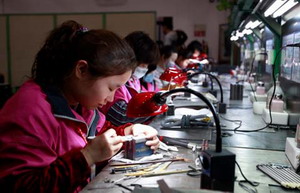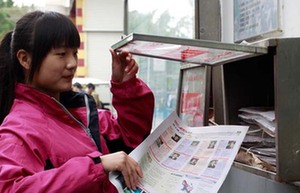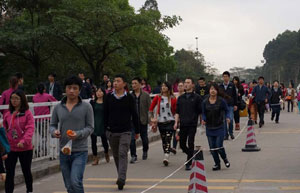

 |
|
Workers come on shift at a Foxconn factory in Shenzhen. Zou Zhongpin / China Daily |
It's 8 am in Shenzhen, and outside Foxconn, the better part of the mega-factory's 160,000 employees are coming on or off shift.
Young men and women stream through security checkpoints.
The grounds are neatly manicured. There are two Olympic-sized swimming pools and a sports field. Tree-lined streets full of restaurants, banks and mobile phone retailers break up the blocks of utilitarian buildings where production lines churn out iPhones and iPods and computers for the world.
In one corner of the compound, there's a cluster of apartment blocks, home to some 40,000 employees. Laundry hung out to dry flutters on the balconies.
There is a hospital and a fire brigade, a canteen that serves 16,000 people at each sitting. There is a building with a "therapy room" decorated in bright colors, where workers can sit and stare at stickers of cavorting butterflies, or a painting of a stag with bouquets of flowers sprouting from its antlers. Across the hall, there is a call center where operators man a counseling help line for employees. At 8.30 am, they are busy.
Part factory, part city, this is the rarely-seen world inside Foxconn's China headquarters.
Since 2010, when global media attention was focused on the company following a spate of attempted suicides, the manufacturing giant has rightly or wrongly been held up as a weathervane for working conditions in China.
But be it through corporate confidentiality, or the barriers of culture and language and distance, much about the professional and private lives of Chinese workers remains a mystery even today.
 |
 |
 |
| A day at the Foxconn frontline | Foxconn exclusive: China faces at core of Apple products | Foxconn soldiers on in Shenzhen |